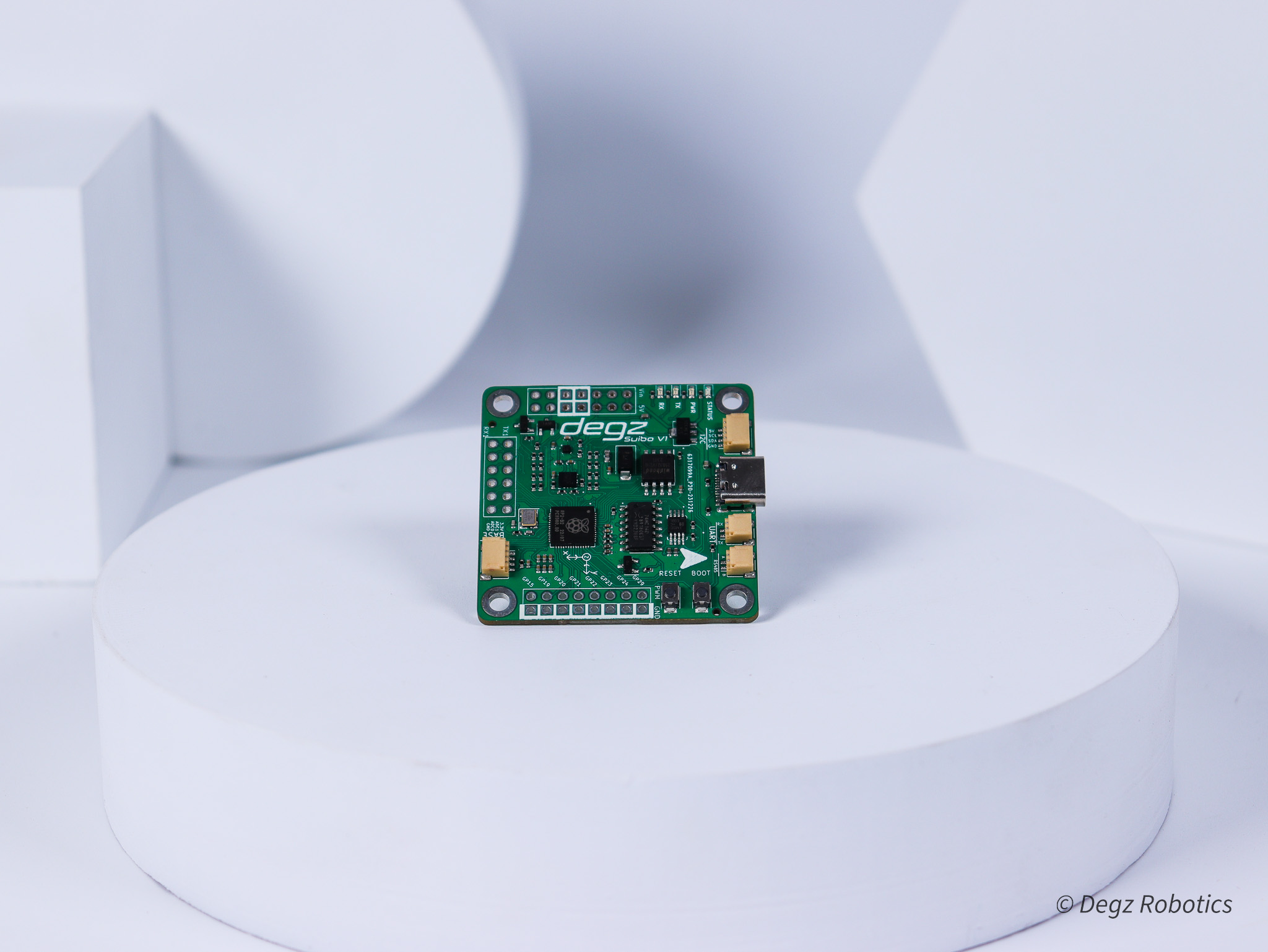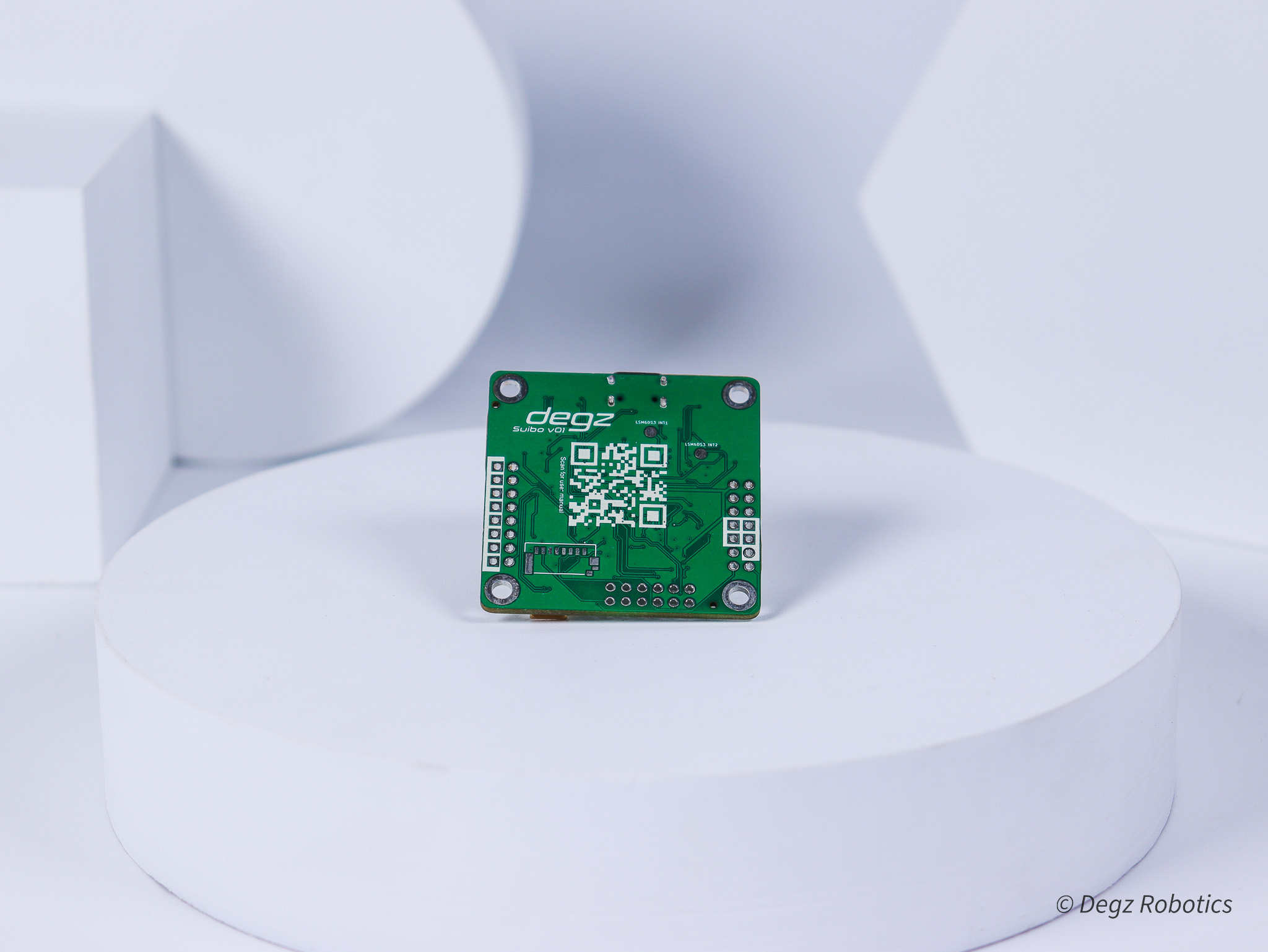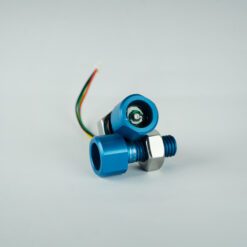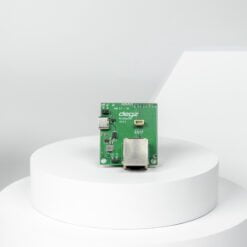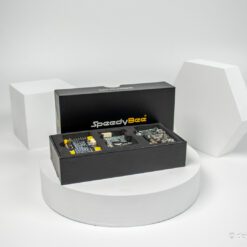Suibo Underwater ROV Control Card
The Ultimate ROV Controller: Suibo
Suibo is an advanced control card specially designed as an underwater vehicle control card. This innovative card is designed to be compatible with the Derin Diver ecosystem. It allows you to further develop your unmanned underwater vehicles with the Dive Control interface and Derin Commander autopilot command library.
In addition, it is a development card compatible with Suibo and with its compact dimensions, it continues the FPV stack tradition and adapts to your projects with additional cards. It offers flexibility and performance together and stands out with its ability to control 8 motors simultaneously and support various communication protocols.
In other words “freedom underwater” with Suibo
Explore, develop, and push the limits in depth.
All the Sensors You Need in One! !
First of all, Suibo is equipped with 9-axis stabilization, which is essential for autonomy and precise control. It is equipped with sensors such as gyroscope, accelerometer, and compass. Therefore, it provides a wide range of uses, from unmanned underwater vehicles to rocket control systems.
Suibo has a dual-core ARM M0 microcontroller, 8 MB external flash memory, IMU sensor and programmable LED.
At the same time, this innovative card will come with the feature-rich Derin Diver ecosystem for your unmanned underwater vehicles. This ecosystem includes the Dive Control Interface and the Derin Commander autopilot command library, which works with Python.
More Compatible and More Powerful
Suibo, the underwater vehicle control card, makes your work easier even for tiny projects. Continuing the FPV stack tradition, Suibo provides compatibility with all projects with additional cards.
Technically, Suibo provides a supply voltage between 3.3V and 6V. Thus, it meets the power needs of your projects flexibly. Suibo’s four I2C-compatible JST connections adapt to the connectivity needs of your project. Additionally, it facilitates integration with the Hi-base card with its UART and has a RS485 compatible JST connection.
As a result, this wide range of connections gives your projects the required diversity and adaptability. For example, it has a user-friendly boot and reset buttons for programming and resetting operations.
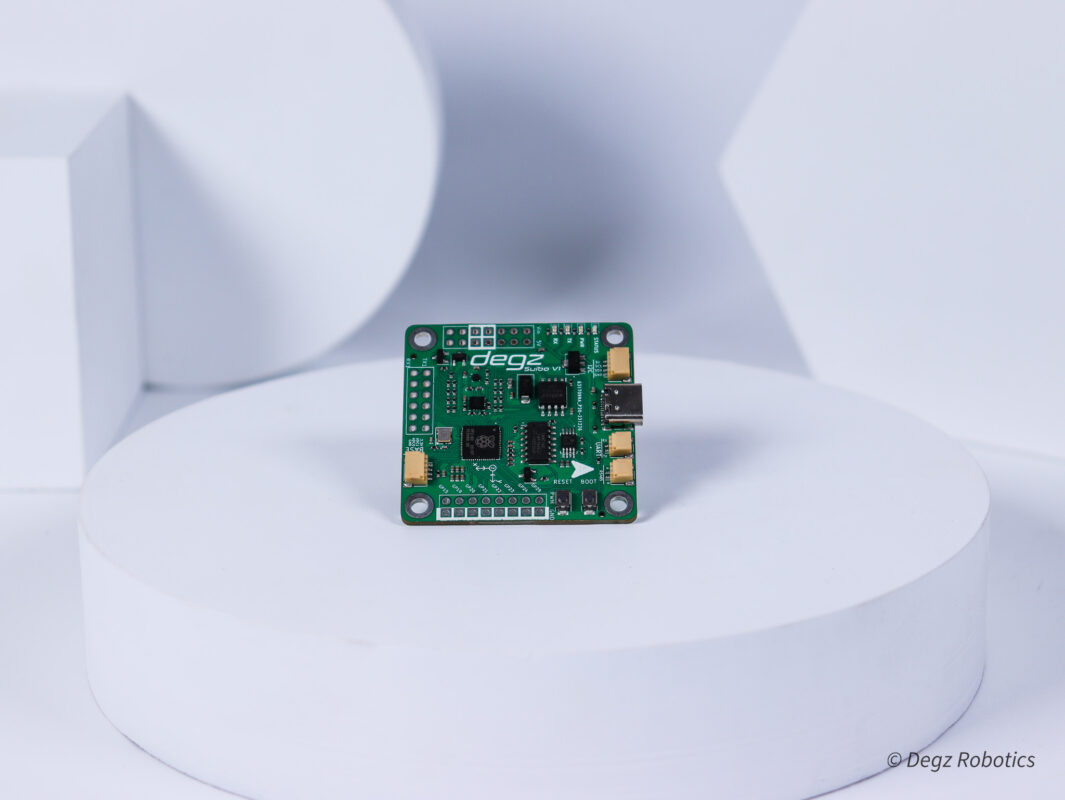
We Made Suibo Adaptable for Diverse Projects
Suibo is designed to provide flexibility for different kinds of projects. For example, you can control 8 motors at the same time with Suibo. Additionally, Suibo supports I2C, SPI, UART communication types. For this reason, you can easily integrate all sensors used in Arduino projects with your underwater vehicle control card.
9-axis IMU
Degz Suibo has gyroscope, accelerometer and compass sensors. Thus, it is easy to use in your autonomous vehicle projects.
All Sensors Needed for Autonomy
All in all, Suibo is a suitable control card for all your robotic projects. It contains all the necessary sensors: gyroscope, accelerometer, and compass sensor. In this way, you can use Suibo as:
- ROV Control Card
- Drone Flight Control Card
- Unmanned Vessel Control Card
- You can even use it as a Rocket Control Card!
DEGZ SUIBO TECHNICAL DETAILS
| Electrical Characteristics | |
| Supply voltage | Supply voltage between 3.3V – 6V. |
| Pin voltage | 3.3V |
| Includes | |
| ADC | 1x Analog Digital Converter (ADC) |
| UART | 2xUART interface |
| I2C | 2x I2C interface |
| SPI | 2x SPI interface |
| PWM | 18x PWM channels |
| Buton | 2 buttons: for RESET and BOOT |
| Sensörler | |
| IMU Sensor | LSM6DS3 IMU sensor |
| Compass | QMC6310 compass sensor |
| Programmable LED | Card contains programmable LED |
| Phisycal Properties | |
| Size | 45 x 45 mm |
| Connector | 2,54 mm Header |
| JST Outputs | |
| I2C Compatible JST Connection | 1x I2C Compatible JST Connection containing 5V, SCL, SDA, and GND connection points |
| UART Compatible JST Connection | 1x UART Compatible JST Connection containing TX ve RX pins |
| RS485 Compatible JST Connection | 1x RS485 Compatible JST Connection |
| Base Card Compatible JST Connection | 1x Base Card Compatible JST Connection containing 3.3V, ADC0, ADC1, and GND |


